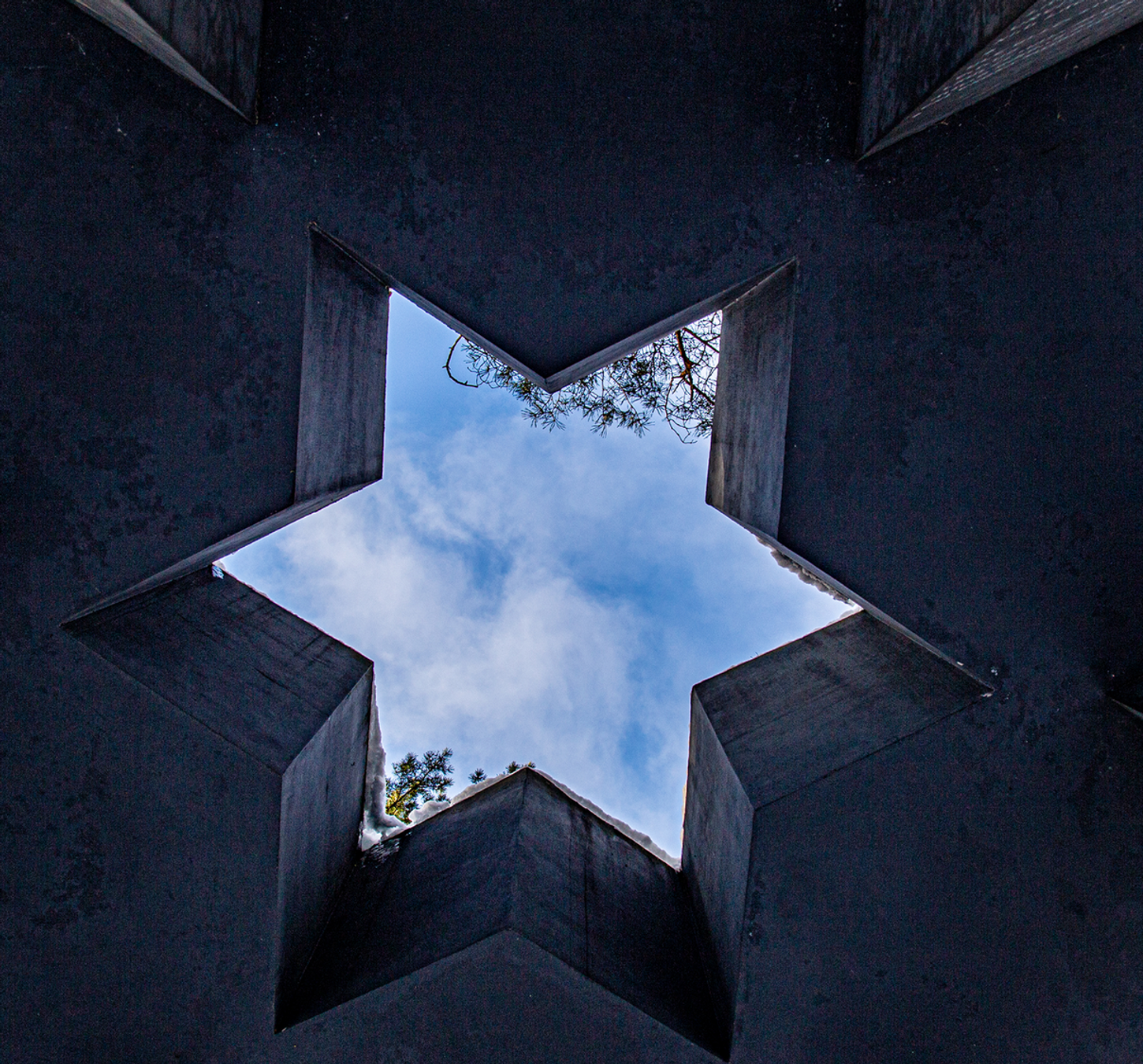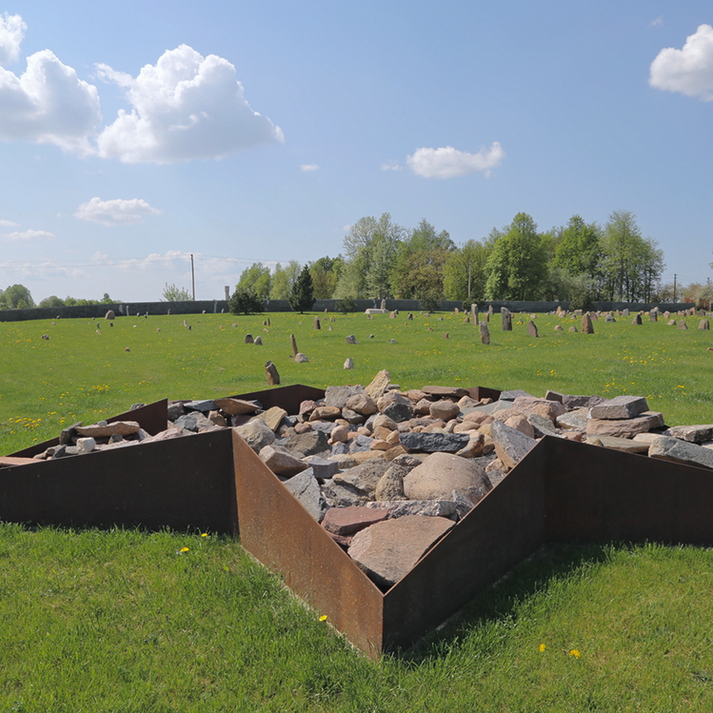Visiting Museum
Education

Cemetery & Memorials
Preserving the memory of Šeduva’s Jews and Lithuania’s lost shtetls
Scroll
The history is not forgotten and that the voices of shtetl life continue to be heard.
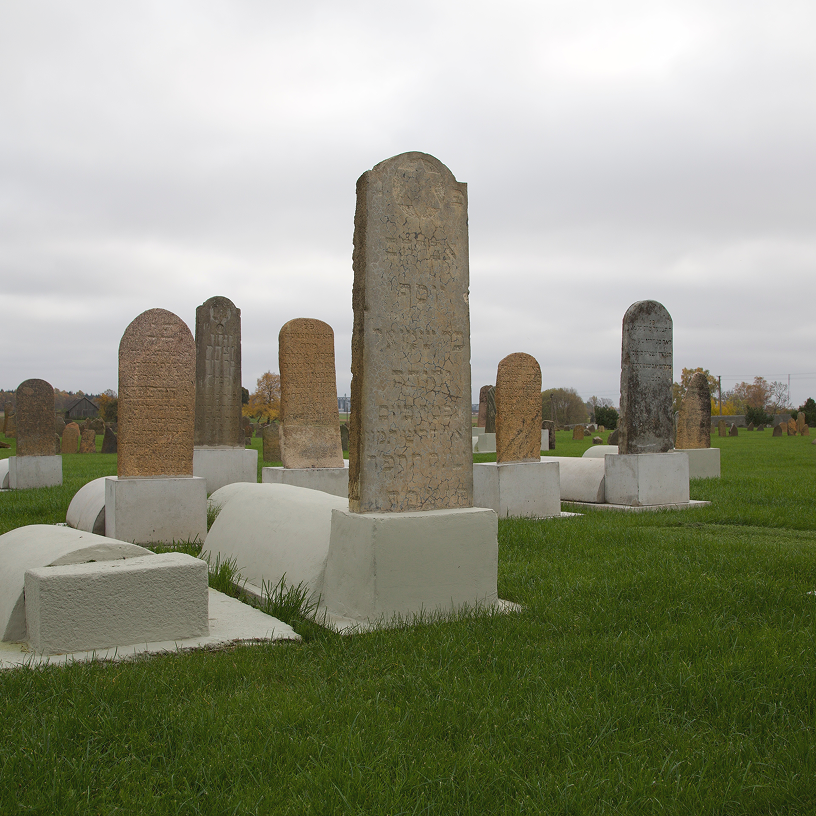
The Lost Shtetl Museum is also a memorial dedicated to the 600 Jews of Šeduva and nearly 200,000 Lithuanian Jews, most of whom perished during the Holocaust. The old Jewish cemetery, located next to the museum, naturally blends into the memorial complex, while the surrounding garden of stillness invites visitors to pause and reflect on the past.
In Šeduva, the museum has also erected a sculpture titled “The Girl” in memory of the town’s lost Jewish community. It stands in the town’s market square, near a monument marking the site where synagogues once stood. Beyond the museum grounds, three memorials in the forests of Liaudiškiai and Pakuteniai mark the tragic sites where the Jews of Šeduva were murdered.
These memorials are an essential part of the museum’s mission — to ensure that history is not forgotten and that the voices of shtetl life continue to be heard.

For centuries, the Old Jewish Cemetery served as the final resting place for Šeduva’s Jewish community. Located on the outskirts of town and surrounded by agricultural fields, the 1.3-hectare cemetery holds deep historical significance. However, for decades following the Second World War, it remained neglected and abandoned. By 2010, the stone fence had deteriorated, and the remaining tombstones were hidden beneath thick layers of grass. Sadly, some Jewish tombstones had even been removed and repurposed for a Catholic cemetery.
As part of the Lost Shtetl project, a large-scale restoration effort was undertaken to preserve this sacred site. The cemetery grounds were cleaned, the stone fence was restored, and a new entrance gate was installed. During the restoration, approximately 1,300 tombstones or fragments were discovered. Of these, 800 gravestones were preserved, and 400 inscriptions were successfully identified, providing valuable insights into the lives of those buried there. The earliest identified tombstone dates back to 1812, while the most recent one is from 1936.
To honor the memory of the Jewish community, fragments of irreparable and unidentifiable tombstones were arranged into a sculptural composition in the shape of the Star of David, forming a lapidarium—a striking monument symbolizing remembrance and resilience.
In recognition of this significant restoration, the cemetery received a Special Mention from the jury for the European Union Prize for Cultural Heritage at the Europa Nostra Awards in 2017.
This restoration plays a vital role in preserving Jewish heritage, ensuring that the history and legacy of Šeduva’s Jewish community are never forgotten.
There are a few audio guide stations next to the cemetery.
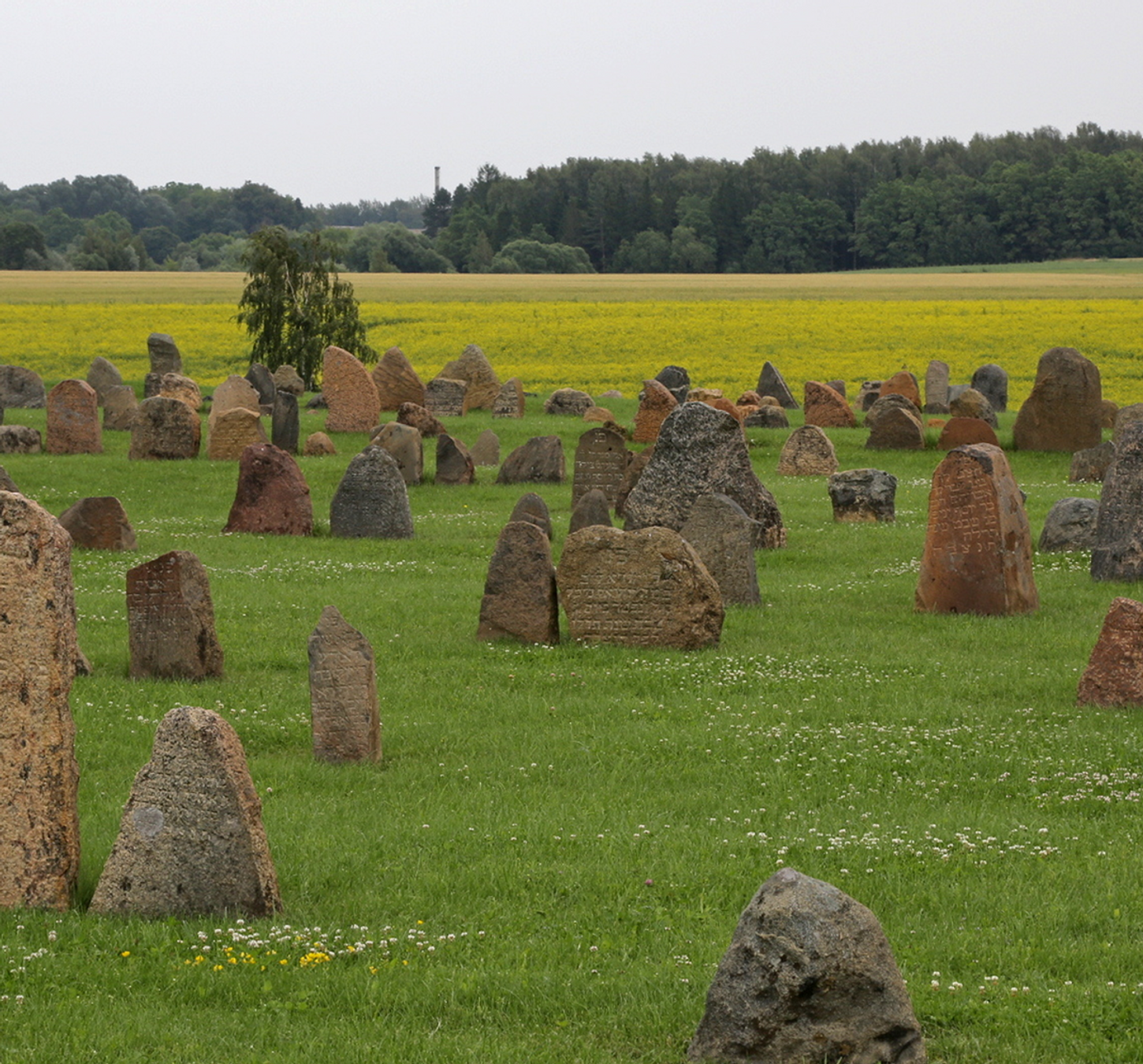
Most of the Jews who lived in Šeduva at the outbreak of the Second World War were not laid to rest in the old cemetery. In August 1941, nearly 700 Jewish men, women, and children were brutally murdered and buried in the forests of Pakuteniai and Liaudiškės. After the war, a few surviving members of Šeduva’s Jewish community marked these sites with memorial stones. Later, Soviet authorities erected uniform monuments dedicated to “Soviet citizens killed by the Nazis”, without acknowledging that the victims were Jews.
As part of the Lost Shtetl project, new memorials created by sculptor Romualdas Kvintas now mark the final resting places of Šeduva’s last Jewish generation, ensuring their history is properly honored.
On August 25 and 26, 1941, nearly all of Šeduva’s Jews were executed in Liaudiškiai Forest, at two sites located 500 meters apart. A Jewish community that had thrived for over 300 years was annihilated in just two days. The massacre was overseen by two Nazi officers, and between 1944 and 1951, twenty-seven local residents were prosecuted for aiding and participating in the killings.
The first memorialization of these execution sites was initiated by a handful of Holocaust survivors from Šeduva. In 1948, they placed a memorial stone at the site. However, this was later replaced by a cement slab inscribed with the generic phrase “For the Soviet Citizens”, failing to mention that the victims were Jews.
In 2015, as part of the Lost Shtetl project, this area was restored, and two significant monuments by Romualdas Kvintas—Durys (Door) and Spindulys-Žvaigždė (Sunray-Star)—were unveiled to properly honor the Jewish victims.
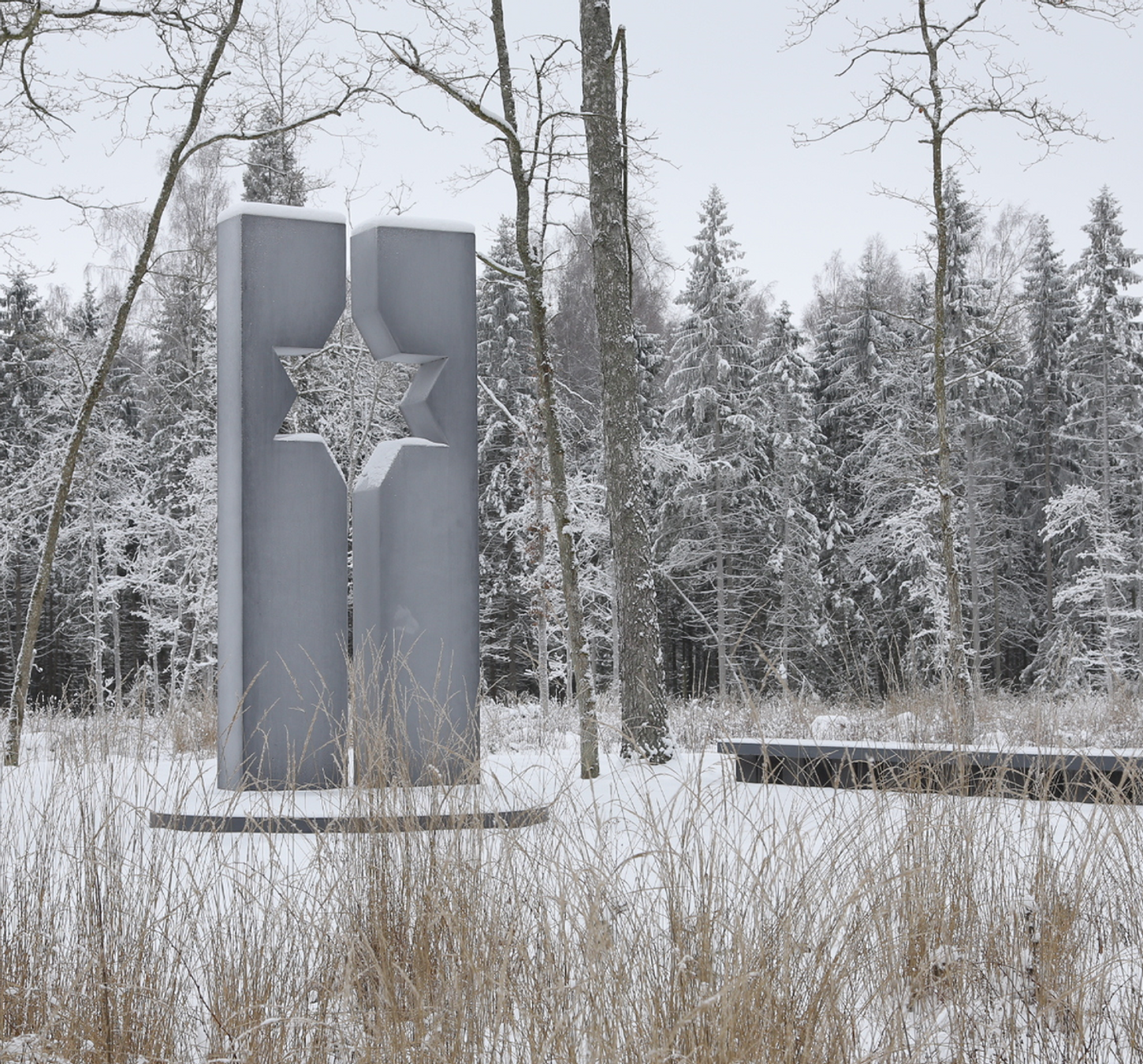
On June 22, 1941, Nazi Germany launched its attack on the Soviet Union. At the time, Lithuania had already been under Soviet occupation since 1940, placing it on the frontlines of the war.
As soon as Nazi forces entered Lithuania, they intensified their antisemitic policies. Together with local collaborators—White Armbanders, TDA (National Labor Security Force) units, local administration, and officers of the local and auxiliary police—they began persecuting and murdering Jews.
In late June–July 1941, all Lithuanian Jews, including the Jewish community of Šeduva, were ordered to wear armbands marked with a yellow Star of David. They were forbidden from participating in public life, subjected to humiliation, and placed under increasingly oppressive restrictions. By July, Nazi officials issued orders for all Jewish communities in Lithuania to be forcibly confined to ghettos and camps.
In mid-August 1941, approximately 150 Jewish men from Šeduva were executed in Pakuteniai Forest, among them the town’s last rabbi, Mordechai Henkin. Rabbi Henkin was a Lithuanian patriot and the chairman of the Šeduva chapter of the Union for the Liberation of Vilnius.
In 2015, the Lost Shtetl project restored this memorial site and unveiled Šviesos žvaigždės buveinė (The Domain of the Light Star), a monument by Romualdas Kvintas.
